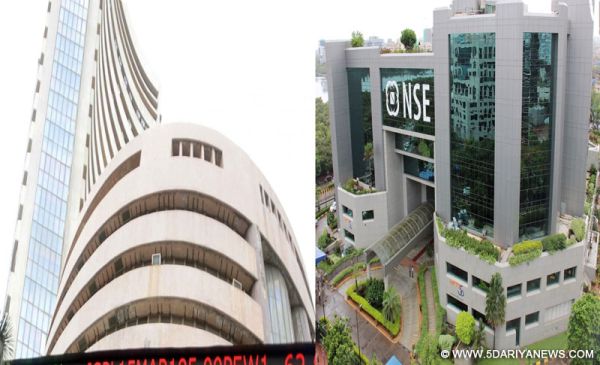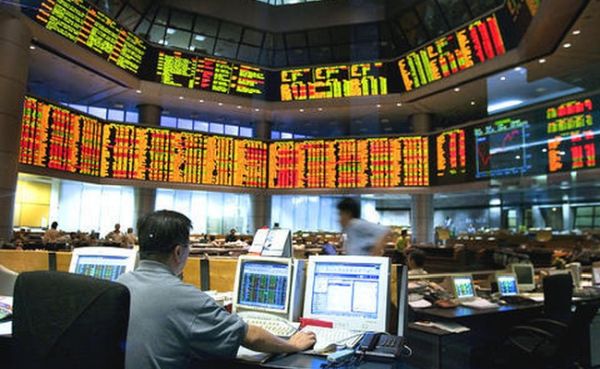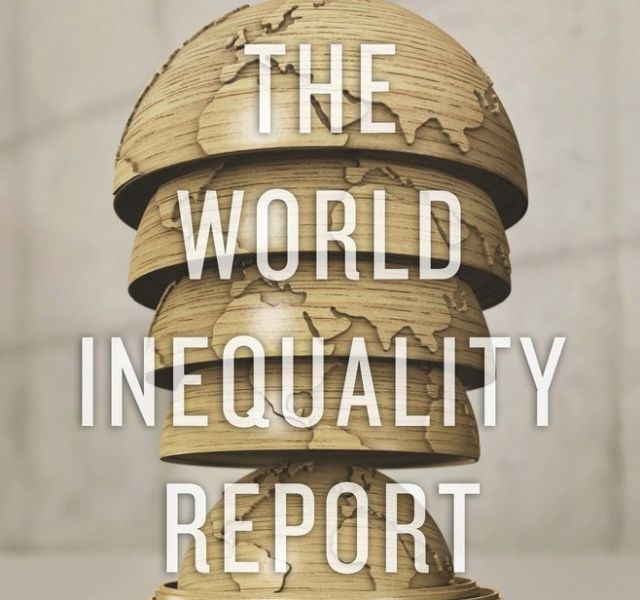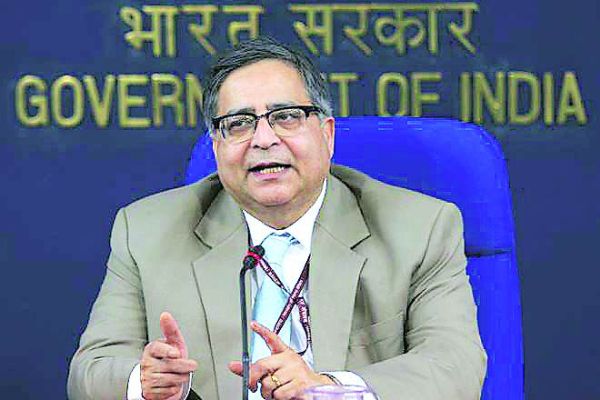
by admin | May 25, 2021 | Economy, Markets, News, Politics
 Mumbai : Key indices of the Indian equities markets recovered on Monday after counting trends indicated a victory for BJP in both Gujarat and Himachal Pradesh during the late morning trade session.
Mumbai : Key indices of the Indian equities markets recovered on Monday after counting trends indicated a victory for BJP in both Gujarat and Himachal Pradesh during the late morning trade session.
The trend reversal happened after both the S&P BSE Sensex and NSE Nifty took an early beating following reports of a possible BJP defeat in Gujarat, Prime Minister Narendra Modi’s home state.
There has been an intra-day swing between the highest and lowest point of trade at the S&P BSE Sensex of over 800 points.
“Markets have opened in the negative as the initial results suggest a much narrower margin of victory for BJP in Gujarat. Till the final results are out markets could swing either way, and if it’s confirmed that BJP has managed to win Gujarat with small but decent margins,” said Deepak Jasani, Head of Retail Research for HDFC Securities.
At 10.20 a.m., the wider Nifty50 of the National Stock Exchange (NSE) traded higher by 61.80 points or 0.60 per cent at 10,395.05 points.
The barometer 30-scrip Sensitive Index (Sensex) of the BSE, which opened at 33,364.52 points, traded at 33,653.46 points — up 190.49 points or 0.57 per cent — from its previous close.
The Sensex touched a high of 33,703.51 points and a low of 32,595.63 points during the intra-day trade so far.
The BSE market breadth turned bullish as 1,378 stocks advanced against a decline of only 751 scrips.
“Equity markets have recovered on the back of polling leads which show a favourable position for BJP in both Gujarat and Himachal Pradesh,” Vinod Nair, Head of Research, Geojit Financial Services.
—IANS

by admin | May 25, 2021 | Business, Corporate, Corporate Buzz, Corporate Governance, Economy, Large Enterprise, Markets, News
 By Aparajita Gupta,
By Aparajita Gupta,
New Delhi : It was a year of turmoil for the hyper-competitive Indian telecom sector as the balance-sheets of many major players kept bleeding, prompting the government to form an panel to chalk out plans to bail out firms.
Reliance Industries’ Jio continued to disrupt the market with its free or low-priced offers while three or four majors fought for the telecom pie tooth and nail. Despite assurances to the sector, the central government’s policy did not help: the Goods and Services Tax (GST) hiked the tax on the sector from 15 per cent to 18 per cent.
Also, the Telecom Regulator Authority of India (TRAI) reduced the Interconnection Usage Charges (IUC) to 6 paise from 14 paise per minute from October 1, 2017, putting additional pressure on the incumbents.
However, a few mergers and acquisitions in the sector sparked hopes of a better tomorrow as consolidation would help the majors to cope with challenges better, even as the cumulative debt of telcos rose to around Rs 4.6 lakh crore and the revenues fell. The sector’s adjusted gross revenue fell to Rs 30,759 crore for the quarter ending September 2017 — a year-on-year decrease of 18.1 per cent.
“This is a consequence of a number of developments over the years, including the entry of new operators in 2009 and the voice tariff war. This was followed by expensive auctions for spectrum (2016), needed by the telcos to offer communications services,” Rajan S. Mathews, Director General, Cellular Operators’ Association of India (COAI), told IANS.
“In 2018, consolidation in the sector is likely to take shape and the telcos will get the benefit of synergy in operations and the overall costs are likely to come down. Eventually, pricing power could also return, enabling longer-term sustainability overall,” he added.
However, Mahesh Uppal, Director of consultancy firm Com First, feels competition from Reliance Jio would continue to hurt margins of the incumbents.
“With Jio guaranteeing free calls to its subscribers, other players will find it difficult to sustain revenues from voice calls. They will be forced to do the same. They will then compete aggressively in the market for data services, especially by providing larger data packs at even cheaper prices. It is not clear whether players will compete more vigorously on quality of service. This might take more time,” Uppal told IANS.
But Amresh Nandan, Research Director, Gartner, said Jio’s disruption with free voice and data offers would eventually subside and become normal.
“Beyond a point, quality and reliability of service matter most. As that takes centre-stage, which has started to happen, free or even discounted services won’t help. If Jio comes up with products beyond connectivity — that enables greater interaction and transactions for consumers with necessary quality and reliability, then the competitive scenario may change,” he said.
Talking about mergers and acquisitions, Uppal said the sector was in the process of reaching an optimal number of players. “I expect the eventual survivors to be Airtel, Jio, the combination of Idea and Vodafone and the government-owned MTNL-BSNL,” Uppal said.
Nandan said mergers and acquisitions were good for the market from the economic perspective.
“Four telcos are dominant in the market and it should lead to a better scenario. However, real value from these deals will take time. These M&As are yet to reach operational culmination, which in itself will shake-up things a bit more,” he added.
“As far as consolidation is concerned, no market in the world has more than five telecom operators, but in India, there were more than 10. In 2018, the Bharti Airtel-Tata Teleservices-Telenor combine and the Idea Cellular-Vodafone combine would take shape,” said Mathews.
The country saw almost 40 per cent jump in 10 months in the number of wireless broadband users from 217.95 million at the end of December 2016 to 322.18 million users at the end of October 2017.
The regulator also came up with recommendations on net neutrality during the year, largely in agreement with suggestions made by the industry on “no blocking, no throttling, no fast lanes”, while allowing reasonable traffic management.
However, according to Mathews, the industry was disappointed that the authority did not adopt their recommendation “to have a wider approach to net neutrality, where issues of OTT (over-the-top) players, definition of net neutrality to include issues around connecting the next one billion unconnected users and national development priorities.”
The industry is now awaiting norms for in-flight connectivity, which is scheduled to come from the regulator by the year end.
The highlights of the year were:
** Announcement of merger of Vodafone India and Idea Cellular
** Airtel’s MoU with Tata Teleservices & Tata Teleservices Maharashtra to merge their Consumer Mobile Businesses
** JioPhone’s digital empowerment of 50 crore feature phone users at an effective price of zero
** Reliance Communications completion of merger with MTS
The telecom buzzword for 2018 appears to be 5G — smarter, faster communication. But that’s going to take around two to three years for full deployment.
(Aparajita Gupta can be contacted at aparajita.g@ians.in)
—IANS

by admin | May 25, 2021 | Economy, Markets, News
 By Rohit Vaid,
By Rohit Vaid,
Mumbai : The outcome of the Gujarat assembly elections, along with the announcement on implementing the “e-way” bill and global cues — especially the US tax reforms — are expected to drive sentiments in the key domestic equity indices in the coming week.
Market analysts observed that cues from Parliament’s winter session, coupled with the direction of foreign fund flows and the rupee’s movement against the US dollar will also impact investors’ risk-taking appetite.
“The next week would begin with the Assembly election results being declared. All eyes would be on the outcome. While the exit polls predict a victory for the NDA (National Democratic Alliance), the margin of the same will matter more for the market sentiment,” Devendra Nevgi, Founder and Principal Partner, Delta Global Partners, told IANS.
“The market is already pricing the best case scenario and some short covering had helped the sentiment too. A high vote share would raise the chances of NDA winning in the 2019 general elections. With the foreign investors in holiday mood, the activity levels are likely to be lower with support from DIIs (domestic institutional investors).”
According to Vinod Nair, Head of Research, Geojit Financial Services: “The verdict of the Himachal (Pradesh) and Gujarat state elections will be the key trigger for the market next week.”
“Cues from the winter session will also be closely followed. Any deviation from the exit polls could negatively impact the market sentiment in the near to medium term. After the election results, the markets will also look towards global cues and US tax reforms,” Nair said.
In terms of economic indicators, the healthy exports figures for November released after market hours on last Friday are expected to give a fillip to the equity markets.
Currency-wise, the rupee had strengthened by 41 paise to close at 64.04 against the US dollar from its last week’s close at 64.45.
“The rupee has been one of the best-performing currencies in the world… We continue to expect inflows in debt and equity. As a result, rupee can range between 63.80 and 64.30,” Anindya Banerjee, Deputy Vice President for Currency and Interest Rates with Kotak Securities, told IANS.
“We can see equities rallying and so too currency once the results are out. However, do not expect a repeat of the post-Uttar Pradesh impact, as positioning is already aggressively in long rupee and long equities.”
As per provisional figures from the stock exchanges, foreign institutional investors (FIIs) sold scrips worth Rs 609.91 crore during the week.
On technical levels, the National Stock Exchange (NSE) Nifty’s upside faces an immediate resistance at 10,410 points-mark.
“Technically, while the Nifty has surged higher, traders will need to watch if the recent rally can sustain early next week,” said Deepak Jasani, Head of Retail Research for HDFC Securities.
“Further, upsides are likely once the immediate resistances of 10,410 points are taken out. Weakness could resume if the supports of 10,265 points are broken.”
Last week, the key Indian equity indices — the BSE Sensex and the NSE Nifty50 — rose as expectations of the BJP’s political victory in the Gujarat and Himachal Pradesh
assembly elections grew.
Consequently, the 30-scrip Sensitive Index (Sensex) of the BSE rose by 428.77 points, or 1.3 per cent, to close at 33,462.97 points.
Similarly, the Nifty50 of the NSE edged higher by 67.6 points, or 0.66 per cent, to close the week’s trade at 10,333.25 points.
(Rohit Vaid can be contacted at rohit.v@ians.in)
—IANS

by admin | May 25, 2021 | Corporate, Corporate Reports, Economy, News

World Inequality Report
New Delhi : Putting various economic growth policies under a question mark, new research from the World Inequality Lab said Indian economic inequality has increased rapidly since the 1980s.
The report – World Inequality Report – has put three other countries, North America, China and Russia in the same category.
The report was compiled by the World Wealth and Income Database.
It said inequality in India has risen substantially since the 1980s following “profound transformations in an economy that centered on the implementation of deregulation and opening-up reforms.”
“In 2014, the share of national income captured by India’s top 1 per cent of earners was 22 per cent, while the share of the top 10 per cent of earners was around 56 per cent. The top 0.1 per cent of earners has continued to capture more growth than all those in the bottom 50 per cent combined.
“This rising inequality contrasts to the 30 years following the country’s independence in 1947, when income inequality was widely reduced and the incomes of the bottom 50 per cent grew at a faster rate than the national average,” the report added.
“The fact that inequality trends vary so greatly among countries, even when countries share similar levels of development, highlights the important role of national policies in shaping inequality. For instance, consider China and India since 1980: China recorded much higher growth rates with significantly lower inequality levels than India. The positive conclusion of the World Inequality Report is that policy matters a lot,” said Lucas Chancel, general coordinator of the report.
“Since 1980, income inequality has increased rapidly in North America, China, India, and Russia, while growing moderately in Europe. However, there are exceptions to this pattern: in the Middle East, sub-Saharan Africa, and Brazil, income inequality has remained relatively stable, at extremely high levels,” the report said.
The statement said the research aimed to contribute to a more informed global democratic debate on economic inequality by bringing the most up-to-date and comprehensive data to the public discussion.
“For the first time ever, this report examines how global growth has been shared among individuals in the entire world since the 1980s, with a particular focus on emerging countries where inequality data had previously been sparse or nonexistent,” said Thomas Piketty, coordinator of the report.
The report also revealed the dramatic decline in the net wealth of governments over the past decades and the challenges this poses for tackling inequality. Based on the data, the report highlighted promising options to tackle income and wealth inequality – starting with the importance of economic data transparency.
The report stressed the need for more ambitious policies to democratise access to education and well paying jobs in rich and emerging countries alike.
The statement said the data presented in the report combines in a systematic and transparent manner all available economic data sources, including household surveys, tax receipts, and income and wealth national accounts (including offshore leaks, when available). “This enterprise relies on the analysis of more than 175 million data points on inequality.”
—IANS

by admin | May 25, 2021 | Interviews

Chief Statistician T.C.A. Anant
By Vishav & Biswajit Choudhary,
New Delhi : The factors responsible for a five-quarter slump in the growth rate, including the adverse effects of demonetisation and GST implementation, have played out and the Indian economy is now poised to take an upward trajectory in the coming quarters, says the government’s Chief Statistician.
He also feels that concerns over slow agricultural growth and inflation were “over-blown” and that the current fiscal would “certainly end with inflation below four per cent”.
Although refusing to forecast the GDP growth rate for the complete fiscal, Chief Statistician T.C.A. Anant says the likely direction was going to be upward.
“If one considers the factors which led to a decline in GDP till the fourth quarter of the last fiscal and the first quarter this fiscal, it would be possible to argue that those factors have worked their way out and we should, therefore, see an improvement in growth,” Anant told IANS in an interview.
The first factor, Anant said, had to do with global commodity prices. These had crashed in 2014-15, resulting in lower input costs that boosted growth rates in 2014-15 and 2015-16. But once the commodity prices recovered they pulled down growth rates, as reflected in the slowdown in the last five quarters.
“Now, the general reading of market experts is that they are likely to stay at this level. If that expectation is maintained, then on this ground, I don’t expect to see any further changes or influence (on GDP calculation) from this source,” he said.
Last week, the CSO released the nation’s GDP for the quarter ending September, which showed a break in the slump of the five quarters, a rise in the manufacturing sector’s output and the economy poised to take an upward path in the coming quarters.
Anant added that there were also several domestic factors at play, including the crisis in the real-estate sector which saw very rapid growth in the high-growth period, and somewhat linked to it, the non-performing assets (NPA) situation.
“The government sought to address this problem through creating a new governance regime for the real estate sector. This regime is now in place and its adoption is under process. In so far as the real estate sector is concerned, the expectation is that as and when the adoption process becomes more complete, we will expect to see a revival in the sector,” he explained.
Regarding the NPA crisis, “which is causing a certain degree of drag in so far as private investment is concerned”, Anant said the process of creation of NPAs, or assets which turned bad, was now over to a certain extent and the economy was in the phase of trying to resolve the issue.
“In addition, during 2016-17, there were short-run effects caused by currency replacement where old notes were de-notified and a replacement process was put in place which led to a temporary shortage of cash. That cash replacement was pretty much complete before the end of the fourth quarter of last year.”
“The fourth major structural change which influenced the decline in growth rate up to the first quarter was the fact that the government decided to introduce the GST. This also created a natural disruption, particularly in manufacturing companies which were faced with the difficulty of the treatment of goods produced prior to GST and were, in their judgment, supposed to be sold after GST came in,” Anant elaborated.
He said this uncertainty led manufacturing companies to first pull down production and then get rid of inventories, all of which came to an end on July 1.
“If you look at all of these events as causation to the declining story which we see in place from the last five quarters, given the sort of responses which have been put in place to them, the belief is that you should now see an upward trajectory.”
“All of these have, so to speak, played out. Or at least the negative elements of these have played out. Their positive elements are still being played out. So if you put all of that together, the likely direction is going to be upward… The growth should improve. But how much is very hard to quantify,” Anant said.
Though the Reserve Bank of India (RBI) adopted a neutral stance on the policy rates earlier this week citing pressure on prices as one of the main reasons, Anant dismissed the concern over inflation.
“We are at a much lower level of inflation than we have ever been any time in the past… In fact, my judgment personally would be that we are going to end the financial year certainly below four per cent.
“The reason why I expect inflation to fall is because one of the factors which has led to prices rising in the last couple of months is food and we are now in the seasonal part where food prices tend to traditionally soften. So chances are that you would probably see the overall effect, even if it rises a bit, would not exceed four per cent. That’s my judgment,” Anant said.
On the slowdown in agricultural growth, the Chief Statistician said while there was a concern, it was over-blown. While there still is considerable dependence on the monsoon, agriculture had become a lot more robust, he said.
“In fact, if you look at our data, our output figures show much less volatility than moisture data, or monsoon data.
“This year’s production relative to last year is slightly lower. But if you look at it in a long-term perspective, this year’s production is substantially better than not just the previous two years — which you can say were drought years — but (also in terms of a) long time series, it is better than the best which was achieved any time in the past, even four or five years ago, when you had very good monsoon,” Anant said.
(Vishav can be contacted at vishav@ians.in and Biswajit Choudhury at biswajit.c@ians.in )
—IANS

 Mumbai : Key indices of the Indian equities markets recovered on Monday after counting trends indicated a victory for BJP in both Gujarat and Himachal Pradesh during the late morning trade session.
Mumbai : Key indices of the Indian equities markets recovered on Monday after counting trends indicated a victory for BJP in both Gujarat and Himachal Pradesh during the late morning trade session.



